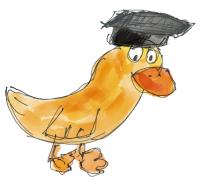Reducing the dimensionality of data with neural networks
Science, 313 (5786):
504-507 (July 2006)DOI: 10.1126/science.1127647
Abstract
High-dimensional data can be converted to low-dimensional codes by training a multilayer neural network with a small central layer to reconstruct high-dimensional input vectors. Gradient descent can be used for fine-tuning the weights in such äutoencoder" networks, but this works well only if the initial weights are close to a good solution. We describe an effective way of initializing the weights that allows deep autoencoder networks to learn low-dimensional codes that work much better than principal components analysis as a tool to reduce the dimensionality of data.
Description
Reducing the dimensionality of data with neural ne...[Science. 2006] - PubMed Result
Links and resources
Tags
community
@tmalsburg's tags highlighted




